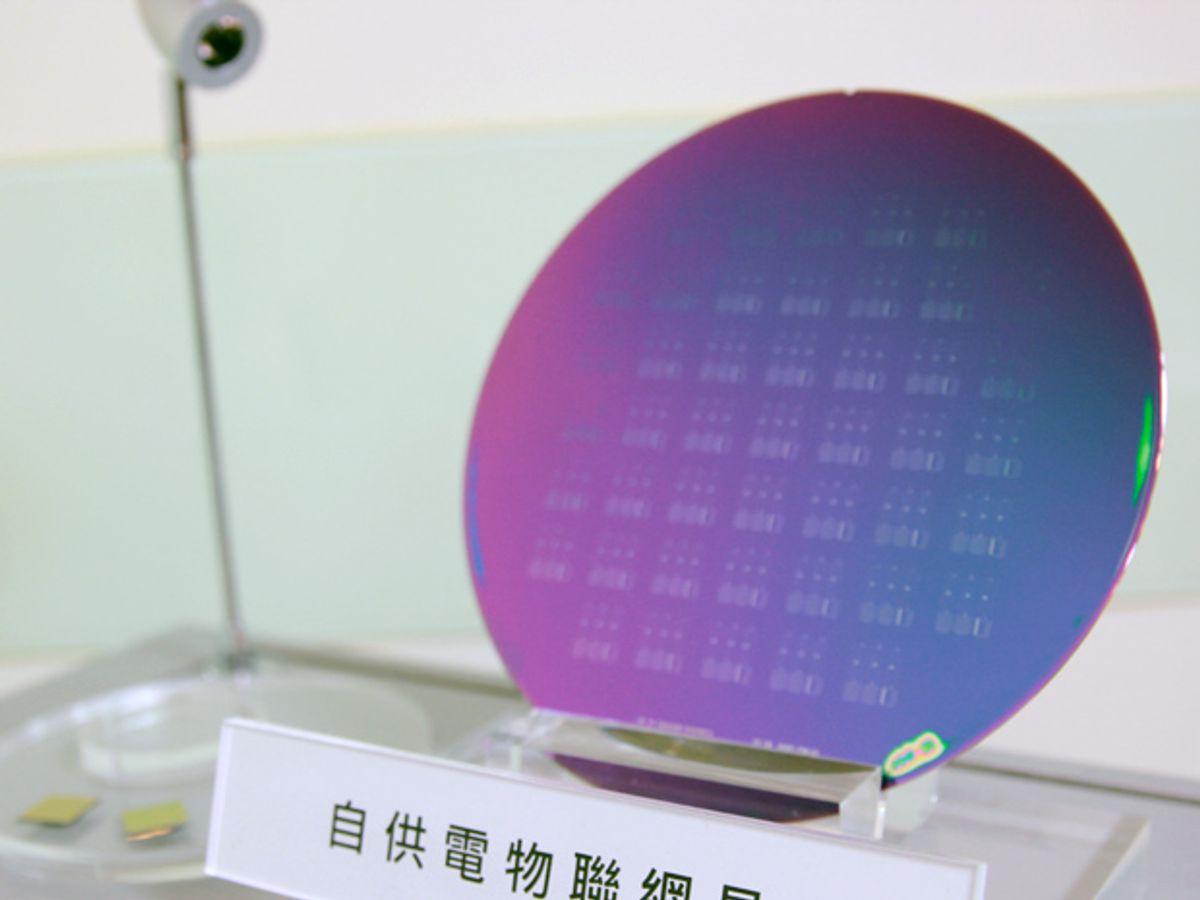A laboratory leading the charge toward monolithic 3-D ICs has now added ambient-light energy harvesters to its integration repertoire. Engineers at Taiwan's National Nano Device Laboratories (NDL) hope to use the integrated photovoltaic component to create a convenient, mobile, and durable Internet-of-Things chip.
The IoT chip is a 3-D stack that includes logic, a type of nonvolatile memory similar to flash, and SRAM all built atop each other. Usually, ambient light energy harvesters placed beside other chips on a circuit board. But building it right on top of a monolithic three-dimensional integrated circuit (3D IC) saved a lot of space, said Chang-Hong Shen, Division Director of the lab’s Emerging Device, said in a news conference in Taipei in March. “The integration reduced the size of the device by 60 percent,” he said.
It also saves energy, because the distance electricity must travel between the energy harvester and the transistors it must power was reduced 1,000-fold—from the order of millimeters to that of micrometers, Shen said. The light-energy harvester portion consists layers of silicon and germanium, that produce an output voltage greater than 1 volt and generates about 7 milliwats per square centimeter in outdoor light. (It generated about 20 microwatts per square centimeter indoors.)
“We just collect ambient optical energy, which could have been wasted, without the demand for more sources of energy in the environment,” Shen said. “The energy collection can still be conducted when the compact chip is in sleep mode.”
According to Jen-Inn Chyi, senior vice president of Taiwan’s National Applied Research Laboratories, the technology can be used in a wide range of IoT applications. “It particularly suits some chips with simple functions. It might not be able to replace main power supply of chips. But it can certainly help prolong a charge cycle, further extending the lifespan of chips,” Chyi said.
According to Shen, light-powered IoT chips either outdoors could detect a structure’s seismic response or sense nearby movement and smoke. It can be also ideally applied wearables, such as smart watches. But powering energy-intensive smartphones are beyond this technology’s reach, Shen said.
This post was corrected on 21 May 2015.



